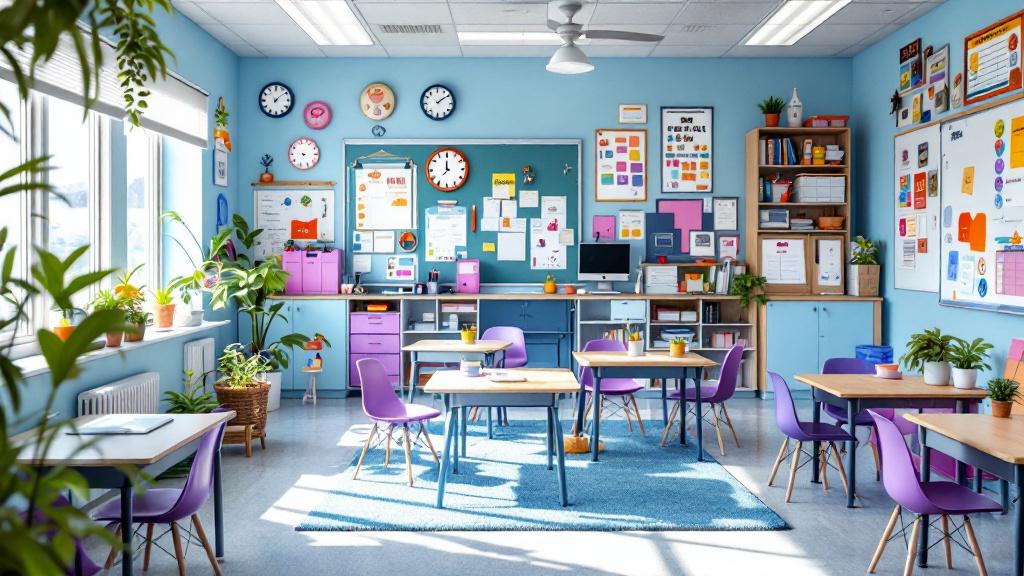Unlocking Daily Independence Through Targeted Interventions
Applied Behavior Analysis (ABA) therapy has emerged as a vital approach in fostering independence among individuals with autism, particularly in essential daily activities like meal preparation and personal hygiene. This comprehensive, systematic therapy employs evidence-based techniques tailored to each individual’s needs, ensuring that skills are learned effectively and generalized across environments. In this article, we explore how ABA supports independence, the strategies used, and the profound benefits it offers in improving quality of life.
Fundamentals of ABA in Developing Daily Living Skills

How does ABA therapy support independence in daily activities such as meal preparation and personal hygiene?
ABA therapy plays a crucial role in helping individuals with autism develop independence in everyday tasks like meal preparation and maintaining personal hygiene. The process begins with detailed assessments to identify current skills and gaps, allowing therapists to set specific, achievable goals.
The core strategy involves breaking down complex activities into small, manageable parts using task analysis. For example, learning to brush teeth might include steps such as picking up the toothbrush, applying toothpaste, brushing in circles, and rinsing. Therapists then use prompting techniques—such as physical prompts, visual cues, or verbal hints—to guide individuals through each step.
As skills improve, prompts are systematically faded to encourage independent performance. Reinforcement is consistently applied; successful completion of each step or the entire task is rewarded with praise or small incentives, which boosts motivation.
ABA also emphasizes practicing skills in real-life settings, such as the home or community, to promote generalization. Collaboration with families and caregivers ensures that learned routines are reinforced regularly outside of therapy sessions.
Through this structured, personalized, and step-by-step method, ABA helps individuals attain lasting independence in vital daily activities, significantly enhancing their quality of life.
Techniques and Strategies for Skill Acquisition
What techniques and strategies are employed in ABA therapy to foster independence in life skills?
ABA therapy utilizes a combination of proven strategies to help individuals with autism build essential independence skills. Central to these methods is task analysis, which involves breaking down complex activities—such as personal hygiene routines or meal preparation—into smaller, manageable steps. This step-by-step approach makes learning accessible and less overwhelming.
Promoting independence also relies on prompting and reinforcement methods. Prompts, such as verbal cues, gestures, or physical assistance, guide the individual through tasks. Once they perform the step correctly, positive reinforcement—like praise or small rewards—encourages repeated success.
To ensure skills are maintained without ongoing prompts, ABA incorporates fading techniques. Prompts are gradually reduced until the individual can perform tasks independently, fostering confidence and mastery.
Natural environment teaching (NET) is another crucial strategy, involving real-world practice in settings like home, school, or community outings. This approach helps teach skills in context, making them more functional and applicable.
Visual supports—such as schedules, visual cues, and modeling—are used extensively, especially for learners with communication challenges. These visuals aid comprehension, decision-making, and sequencing activities.
Furthermore, modeling—demonstrating desired behaviors—serves as a powerful teaching tool, allowing individuals to observe and imitate appropriate actions.
An innovative tool, SWAT Support (Supporting with Alternative Techniques), enables staff to provide minimally invasive, on-the-spot prompts during community outings, increasing independence in real-life settings.
Together, these strategies create a comprehensive framework that systematically promotes self-sufficiency. Whether improving daily routines or developing social and communication skills, ABA’s tailored techniques empower individuals to achieve greater independence across environments.
Benefits of ABA in Teaching Self-Care and Independence

What are the benefits of ABA therapy in teaching self-care and independent living skills?
ABA therapy provides substantial advantages in helping individuals with autism learn essential self-care and daily living skills, leading to greater independence and a better quality of life.
Through structured approaches like task analysis, prompting, fading, and positive reinforcement, ABA therapists teach vital routines such as dressing, grooming, hygiene, meal preparation, and household chores. These techniques break complex tasks into manageable steps, making learning accessible and encouraging success.
One of the main strengths of ABA is its focus on the generalization of skills. It ensures that learned behaviors are transferred across various environments like home, school, and community settings. This consistency helps individuals become more adaptable and confident in their daily activities.
In addition to practical skills, ABA therapy enhances functional communication and emotional regulation. These improvements support better interactions, reduce frustration, and promote social engagement.
By fostering these capabilities, ABA reduces dependency on caregivers, paving the way for individuals to manage their routines with less support. This not only boosts personal confidence but also lessens caregiver stress.
Overall, ABA therapy builds a foundation for lifelong independence. It teaches safety routines such as water safety and street crossing, encourages self-advocacy, and prepares individuals for community participation.
In summary, ABA therapy’s comprehensive, evidence-based strategies actively promote independence, self-confidence, and an improved quality of life for individuals with autism. Many success stories attest to the positive, lasting impacts these interventions can have.
Teaching Daily Living Skills in Children and Teens with Autism

How does ABA therapy improve independence skills in children and teens with autism?
ABA therapy enhances independence in children and teenagers by teaching essential daily living, social, and self-care skills through personalized, step-by-step approaches. It uses techniques such as task analysis, prompting, reinforcement, and visual supports to help children master routines like dressing, communication, and problem-solving.
One of the core aspects of ABA is breaking down complex activities into manageable components. For example, brushing teeth or preparing a simple meal is taught through sequential steps, each reinforced until mastered. This systematic method encourages confidence and skill retention.
ABA also emphasizes learning across multiple environments. Therapists work in natural settings such as home, school, and community, which helps children generalize skills to real-world situations. Family involvement is vital, with parents coached to set routines, prompt behaviors correctly, and reinforce successes.
Skills like toileting, safety habits, household chores, and social communication are prioritized because they directly impact a child's ability to function independently. For instance, teaching safe crossing of streets or managing personal hygiene equips children with vital safety and self-care routines.
Progress is measured with ongoing assessments, and goals are adjusted as children advance. Visual aids, modeling, chaining, and prompts support learning, with a focus on making skills automatic and natural.
Early intervention and consistent practice significantly improve outcomes. As children grow, ABA's emphasis shifts toward generalization, helping adolescents become more self-reliant, confident, and engaged in daily life.
Overall, ABA therapy fosters independence by systematically teaching everyday skills, empowering children and teens to participate fully in life and reducing family stress.
Community-Based Learning and Real-World Application

How does ABA therapy prepare teens for real-world independence?
ABA therapy emphasizes the importance of community-based learning and vocational skills to help teens transition into independent adults. These approaches involve practicing skills in actual environments such as stores, streets, and workplaces.
By organizing community outings, teens learn to navigate unfamiliar settings safely. They receive safety training tailored to real-world scenarios, including crossing streets, water safety, and emergency communication. Visual cues, scripts, and identification methods support decision-making and problem-solving.
Vocational readiness is another focus. Teens participate in activities like job simulations, workplace routines, and money management exercises. These practices help them gain confidence and competence for employment and daily chores.
To promote skill retention and adaptation across various contexts, ABA incorporates varied environments. Repeating tasks in different settings ensures that skills are not context-specific but transferable.
Parent and caregiver involvement plays a crucial role. Coaches teach families how to set up routines, prompt correctly, and reinforce successes at home. This consistency across environments enhances generalization, making skills more reliable and useful outside of therapy sessions.
How do these methods increase independence?
Using community outings, functional task practice, and safety training, ABA creates opportunities for teens to apply learned skills in daily life. Visual supports and guided scripts improve decision-making, while real-world practice builds confidence.
This structured approach helps teens become self-sufficient in activities like shopping, using transportation, and workplace tasks. Family involvement boosts consistency, enabling skills to be reinforced in multiple contexts.
Ultimately, ABA’s community and vocational training strategies empower teens to navigate the complexities of adult life more independently.
| Approach | Focus Area | Techniques | Benefits |
|---|---|---|---|
| Community Outings | Safety and navigation | Visual cues, scripts, practice | Increased safety awareness and confidence |
| Vocational Skills | Employment readiness | Job simulations, time management | Improved employability and independence |
| Environment Generalization | Skills transfer | Repeating tasks in varied settings | Long-term retention and versatility |
| Family Coaching | Consistency | Routine setup, prompting, reinforcement | Skill reinforcement beyond therapy |
The Role of Family and Caregiver Involvement in Skill Development
How does ABA therapy involve families to enhance independence skills?
Family participation is a vital part of ABA therapy for individuals with autism. Parent training and coaching enable caregivers to actively support skill development outside of therapy sessions.
Therapists teach families how to set up effective routines and use prompting strategies to guide daily activities. Reinforcing small successes at home, with praise or tangible rewards, helps strengthen new skills. This consistency across different environments ensures that learning is integrated into everyday life.
Caregivers are also instructed on how to use visual cues, such as checklists or picture cards, to support routines like dressing, grooming, or safety practices. These tools make it easier for children to understand what is expected and to perform tasks independently.
By involving families in this way, therapy extends beyond the clinical setting. Regular practice at home, complemented by therapeutic guidance, fosters better generalization and retention of skills.
This partnership promotes long-term independence, as children can reliably perform daily activities with increased confidence. As families guide and reinforce these skills consistently, children are more likely to develop habits that last a lifetime.
Additional insights
| Aspect | Strategies | Impact |
|---|---|---|
| Family training | Coaching on routines, prompts, reinforcement | Improves consistency and skill retention |
| Establishing routines | Using visual aids, reinforcement techniques | Supports independence in daily tasks |
| Generalization of skills | Practice across settings, caregiver involvement | Ensures skills are usable in real life |
| Maintenance | Regular review, adapting strategies | Promotes sustainability of progress |
Monitoring Progress and Adjusting Treatments
What assessment and monitoring strategies are used in ABA to promote independence?
In ABA therapy, careful assessment is the first step in promoting independence. Therapists start by evaluating a child's current skill level and identifying routines or behaviors that need development. This assessment helps define clear, measurable goals tailored to each child's unique needs.
Once goals are set, ABA practitioners implement strategies involving structured teaching sessions, often breaking down complex tasks into smaller steps. During these sessions, they collect data on the child's responses to various interventions.
Data collection is continuous and systematic. It involves recording whether the child successfully completes specific steps, requiring prompts, or needs additional support. This ongoing process provides real-time feedback on progress.
Through regular data analysis, therapists can identify patterns and determine whether a strategy is effective or needs adjustment. For example, if a child is consistently successful in a home setting but struggles elsewhere, the plan can be modified to include more community-based practice.
Progress monitoring also involves periodic assessments that measure skill acquisition and generalization across environments such as school, home, and community.
Regular communication with caregivers is critical. It ensures that strategies are reinforced consistently in different settings, which is vital for long-term independence. Family members may be coached on prompting techniques, reinforcement schedules, and how to implement routines seamlessly.
In practice, this flexible, data-driven approach allows therapists to modify interventions promptly, ensuring continuous progress toward independence. Adjustments may include increasing prompting fading, changing reinforcement types, or introducing new skills aligned with evolving needs.
Overall, the combination of ongoing assessment, data collection, tailored goal-setting, and caregiver collaboration creates a cohesive process that promotes sustained independence skills.
Practical Strategies for Promoting Skill Generalization

How do ABA therapy techniques help children transfer skills across different environments?
ABA therapy emphasizes practicing skills in real-world settings to ensure children can use them independently outside therapy sessions. This includes breaking complex tasks into smaller, manageable steps—such as brushing teeth or preparing a simple snack—and teaching these steps with clear prompts.
Visual cues, like pictures or checklists, support recognition and recall of routines. Environmental supports such as labeled bins, designated spaces, or visual schedules further reinforce learning.
To foster lasting independence, therapists progressively fade prompts, encouraging children to perform skills with less assistance. This process, known as prompt fading, helps transition from guided practice to autonomous performance.
Involving family members and practicing skills at home, school, and community settings ensures children can generalize behaviors across different environments. Community outings or social activities serve as additional opportunities to reinforce daily living skills.
Altogether, this approach builds confidence, minimizes family stress, and ensures that independence skills are meaningful and applicable in everyday life.
What methods are used to ensure that independence skills learned in ABA therapy generalize across settings?
Skills are practiced across real settings until independence emerges. ABA therapy builds daily living skills by breaking tasks like brushing teeth, dressing, or meal prep into manageable steps, teaching with prompts, and reinforcing success.
Visual cues and environmental supports are used to aid recognition and task completion. Fading prompts and increasing natural reinforcement facilitate skill retention and independence.
Involving family members and community environments ensures that skills are generalized beyond therapy sessions, promoting consistent behavior across all areas of daily life. This approach helps strengthen confidence, reduce family stress, and support long-term independence.
| Strategy | Description | Examples |
|---|---|---|
| Use of visual cues | Visual supports aid in recognition and sequencing of tasks | Pictures, checklists, signs |
| Practice across settings | Repeating skills at home, school, and community environments | Grocery shopping, park visits |
| Fading prompts | Gradually reducing assistance to encourage independent performance | Verbal prompts, gestures |
| Natural reinforcement | Using naturally occurring praise or rewards during everyday activities | Receiving help, completion praise |
| Family and community involvement | Ensuring consistency and reinforcement across environments | Family routines, community outings |
Using these methods consistently helps children develop durable skills and successfully apply them wherever they go, paving the way for greater independence and confidence.
Safety Skills as a Foundation for Independence
How does ABA therapy support the development of safety skills necessary for independence?
ABA therapy emphasizes early introduction of essential safety routines that are vital for individuals with autism to navigate their environment safely. These routines include wandering prevention, water safety, safe street crossing practices, and emergency communication.
To teach these skills, ABA practitioners utilize a variety of strategies such as role-playing, community walks, visual supports, and scripts. These tools help individuals understand safety concepts concretely and remember them across different situations.
For instance, visual cues like safety signs or pictures are used to reinforce rules, while prompting and fading techniques guide the individual from guided practice to independent application of safety skills. Community-based practice allows individuals to generalize their learning in real-world settings, ensuring they can handle safety challenges outside of therapy sessions.
Teaching safety also involves identifying potential risks and developing personalized plans to address them. For example, teaching street crossing involves step-by-step instructions, practicing with visual aids, and reinforcing safe crossing behaviors in a variety of environments.
Overall, ABA’s structured and systematic approach helps individuals develop confidence and competence in safety routines. This foundation of safety skills is crucial for enabling safe independence, reducing risks, and promoting active participation in community life.
Practitioners and families work together to reinforce these routines daily, ensuring that safety becomes a natural part of everyday life. This not only enhances independence but also contributes to a sense of security for individuals and their families.
Fostering Lifelong Independence
The systematic and personalized application of ABA therapy plays a pivotal role in equipping individuals with autism to attain independence in crucial daily activities like meal preparation and personal hygiene. Through structured techniques such as task analysis, reinforcement, prompting, and generalization strategies, ABA empowers learners to acquire and sustain essential life skills. Involving families and caregivers ensures that these gains are maintained and transferred across various environments, ultimately leading to improved autonomy and a higher quality of life. As ABA continues to evolve, its focus remains steadfast on nurturing independence, confidence, and meaningful participation in society for individuals with autism.
References
- The Impact of Applied Behavior Analysis to Address ...
- ABA Therapy for Teens: Building Independence
- How ABA Therapy Builds Self-Care & Independent Living ...
- Life Skills in ABA Therapy: What Families Can Expect
- How ABA Therapy Helps Build Daily Living Skills
- Increasing Independence of Adults With Autism in ...
- Ten Ways to Build Independence





































































































